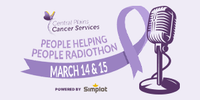Southern Health is one of the first health regions in Canada to be recognized under the national Using Blood Wisely Designation.
This means all hospitals in the region have met or exceeded the national benchmark of appropriate red blood cell use in Canada. The opportunity came about after Health Transfusion Medicine approached the RHA to ask if one of the region's hospitals would be interested in piloting a project to reduce the use of blood products. Dr. Denis Fortier is the chief medical officer and regional lead for medical services, he says it grew from there.
"The Chiefs of Staff, the physician leads of pretty much all of the hospitals unanimously said, 'you know, if we're going to do this, let's do this for all of the hospitals. Let's do this as an entire region, as opposed to one hospital.'" says Fortier. "Of course, that poses a lot of challenges, but transfusion medicine did say that they would do this. The result was we ended up being the first region in Canada designated."
Over 120 hospitals are participating in the Using Blood Wisely campaign, a national initiative to reduce inappropriate red blood cell transfusions. This campaign challenges hospitals to audit their inpatient red blood cell transfusions to see how they compare to national appropriateness benchmarks. Fortier talks about reducing inappropriate red blood cell usage.
"In rural Manitoba, we learned early on that sometimes you wanted to have an extra bag or unit of red blood cells, just in case, because we're further away from Winnipeg. We're further away from the blood services, so often we would order two plus, maybe another one to be sure, and then there would be wastage."
The recognition of Using Blood Wisely means a new set of guidelines have been implemented that optimizes laboratory and clinical processes to assess the appropriateness of each unit transfused in the inpatient setting.
Southern Health-Santé Sud is a designated bilingual regional health authority and covers 20 rural municipalities, seven municipalities, four cities, four towns, and seven First Nation communities.











